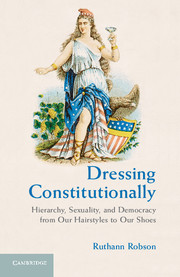6 - Dressing Religiously
Published online by Cambridge University Press: 05 July 2013
Summary
Religious dress – often called “religious garb” – implicates one of the most contentious issues of constitutional adjudication. Perhaps because religion has been so historically divisive and continues to be so, the doctrines and theories governing religion are themselves subject to marked divisions. Inherent in the well-known language of the First Amendment that “Congress shall make no law respecting an establishment of religion, or prohibiting the free exercise thereof” is the division between the Establishment Clause and the Free Exercise Clause. While religious garb and grooming most often involve matters of free exercise, they may also embrace Establishment Clause concerns. Within the Free Exercise Clause, divisions regarding belief and practice can be paramount. Doctrinal developments within Free Exercise Clause doctrine have produced divisions regarding the level of scrutiny to be applied and legislative interventions have compounded the segmentation. Important to the bisection of the First Amendment provisions regarding religion into the Establishment Clause and Free Exercise Clause is the distinction between the majority religion(s) and minority religions. Additionally, and perhaps the most controversially, there is the division between religions and nonreligion.
All of these concerns animate issues of tattoos and the Church of Body Modification, accommodation of religious attire and grooming standards in prisons, and women’s religious dress including Catholic habits and Muslim niqab and hijab.
- Type
- Chapter
- Information
- Dressing ConstitutionallyHierarchy, Sexuality, and Democracy from our Hairstyles to our Shoes, pp. 128 - 152Publisher: Cambridge University PressPrint publication year: 2013



